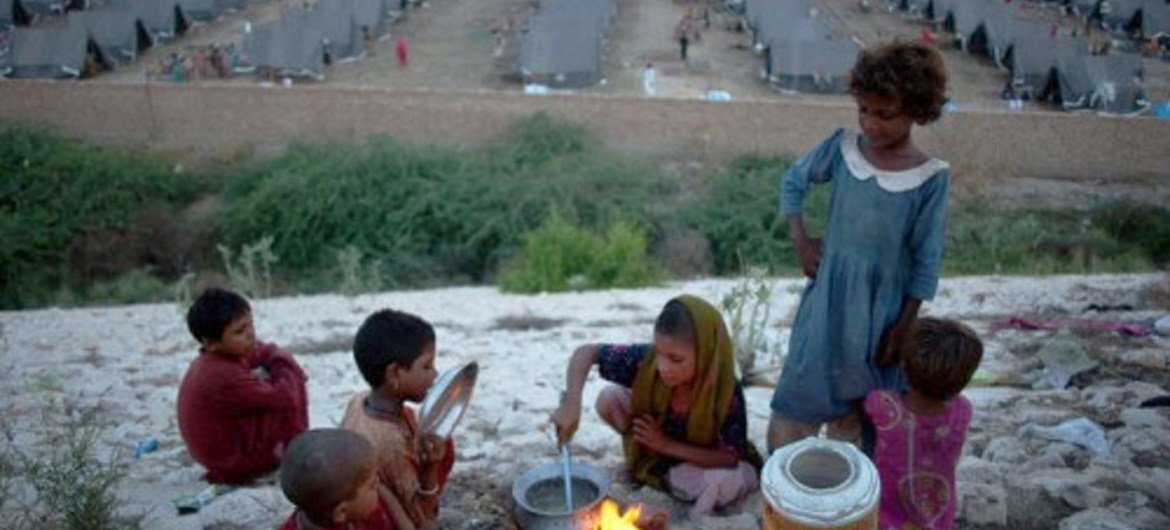Millions who have been displaced by the worst floods in Pakistan’s history need an urgent way out of their misery. If anything, the scale of the recent disaster is unprecedented. By all accounts, the worst is not over. In fact, it has not even started.
Where do we stand today? Cumulative estimates of losses are increasing (initial estimates have gone beyond $15 billion) and over 20 million people have been displaced in 71 districts of Pakistan. This is a recipe for chaos and failure. There is no alternative to undertaking urgent planning efforts leading to an early recovery plan.
Learning from 2005: Before an early recovery plan is formulated, learning from the 2005 earthquake is vital. The foremost lesson from that phase of disaster-management relates to the ineffectiveness of setting up centralized bodies such as Earthquake Reconstruction & Rehabilitation Authority (ERRA), which did not deliver the goods. After five years of operation, ERRA “has not even utilized the 50% of the funds earmarked and has to date spent less than 20% on the education sector”, says Usman Qazi who was closely affiliated with the post-earthquake recovery drive.
Another lesson pertained to the installation of parallel structures at all governmental levels thereby leading to duplication of effort and inefficiencies. The Planning Commission must be aware of the pitfalls of creating centralized relief and reconstruction agencies. The earthquake recovery process also witnessed the unnecessary involvement of contractors’ mafia in the reconstruction process. The rural support programmes and other community-based networks delivered far better than contractor-driven relief efforts.
Donor fallacies: The underlying cause of the above mentioned failures related to the insistence by donor agencies on a one-window operation (through ERRA, etc.) whereby a top-down model was transplanted on a complex country such as Pakistan. At the end of the day, neither full reconstruction was achieved nor sufficient levels of transparency realised, as related in the Western media. It is amusing to note that the same donors who were instrumental in creating unworkable relief structures after the 2005 earthquake are now accusing Pakistan of an ‘image problem’.
Timeliness: When governments and donors work together they reinforce each other’s bureaucratic slovenliness. To avoid the past trends, it is essential that within one month an early recovery plan should be ready. Because the scale is gigantic, this has to be a joint effort between the provincial governments, the federal government, civil society and the international organisations.
What should be the key components of this plan? It should prioritize sectors and areas of investment. Building homes may not be the first step as has been erroneously suggested. People can take care of that.
Risk-reduction: The crumbling risk reduction and mitigation infrastructure should be restored forthwith. Repair of dikes, embankments, spurs, and the river training works need to be addressed at once. Vulnerability has to be minismised as a first intervention.
Livelihoods: Millions who have lost their assets and livelihood sources deserve a return to their earlier economic lives. Essential livelihoods’ infrastructure such as canals, roads, bridges, markets, need to be restored lest we allow millions to be on a dole for a long time to come. There will be no such money coming our way other than the emergency packages. In the rural areas, agricultural inputs will need to be arranged for and paid for in the short term. Enterprises in the urban areas (especially KP) would need to be restored with microcredit and a comprehensive package of enterprise development.
Entitlements: The government offices, which have been washed away need immediate revival. Governance institutions and entitlements are intertwined. The lost land records, National Identity Cards (NIC) and other documentation will be required in the short term to ensure that affected citizens to reclaim their entitlements and legal identity. Public health and prevention from disease is also an entitlement (guaranteed by the state) and an early recovery plan must focus on this as a key priority to save human lives.
Decentralisation: It is also essential that the identification of the local agencies for recovery efforts are identified and strengthened. For instance, it should be urgently decided as to who at the local level will be in charge of this effort. Who will supervise the UN or other relief agency-hired contractors? As noted above the district reconstruction units set up after 2005 disaster were parallel structures, which wasted efforts.
Simplified procedures: Much to the chagrin of the international community, recovery cannot be achieved with the current complex and inefficient procedures. For instance, it takes 11 steps to get a local project approved through the maze of local and provincial bureaucracies. The ERRA increased this number to 17 in an overdrive to superimpose an unworkable model of transparency. This has to change. Pakistan’s media and electoral accountabilities (though nascent in their nature) will ensure that leakages don’t occur.
Getting a sound early recovery plan requires a mix of coordination, consensus and the right expertise Setting up commissions of ‘reputable’ individuals is a failed idea as we cannot afford simplistic solutions and sloganeering in this environment. The urgent need is to strengthen the state and for the international community to help it in these dire times.
Raza Rumi is a writer, editor & policy expert based in Lahore – razarumi@gmail.com.



